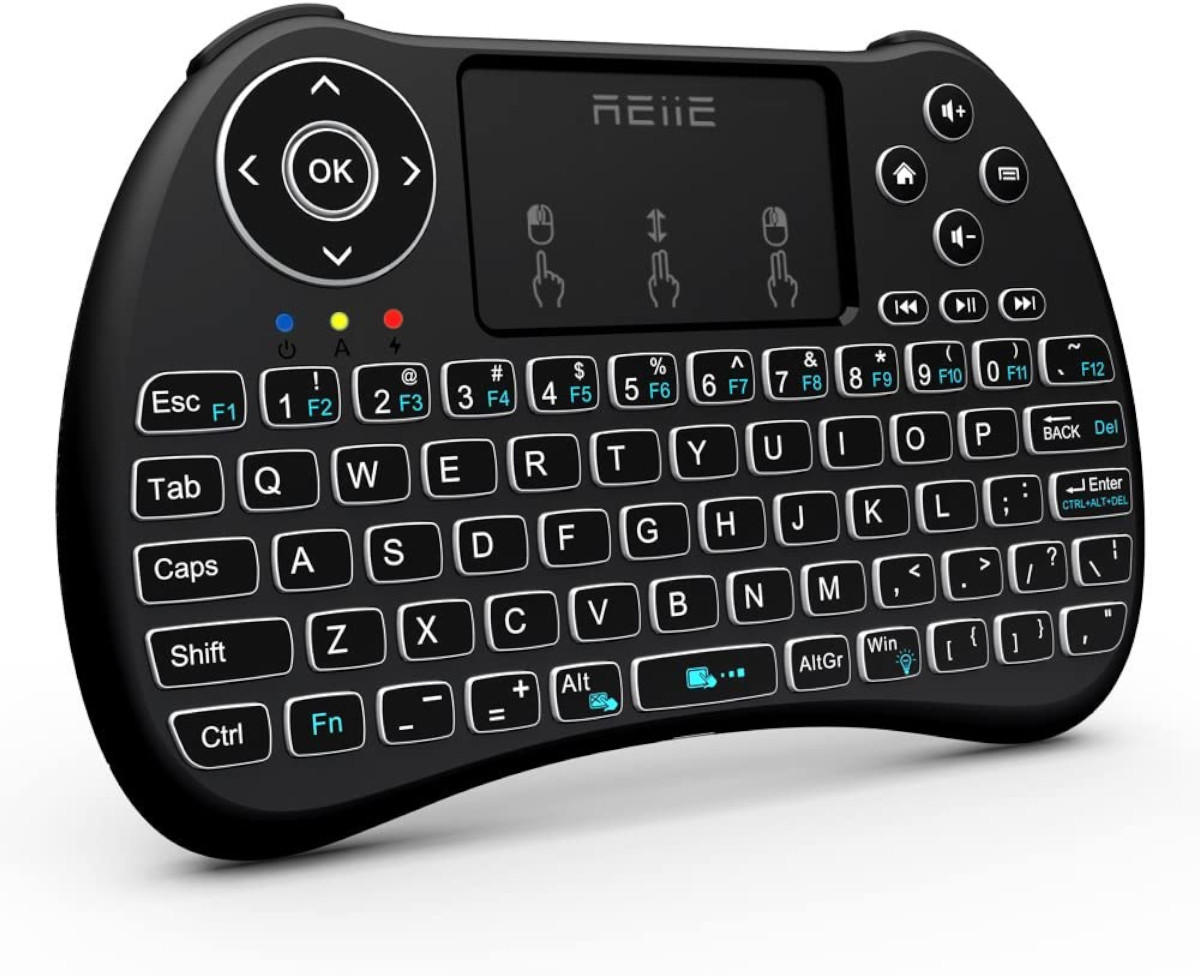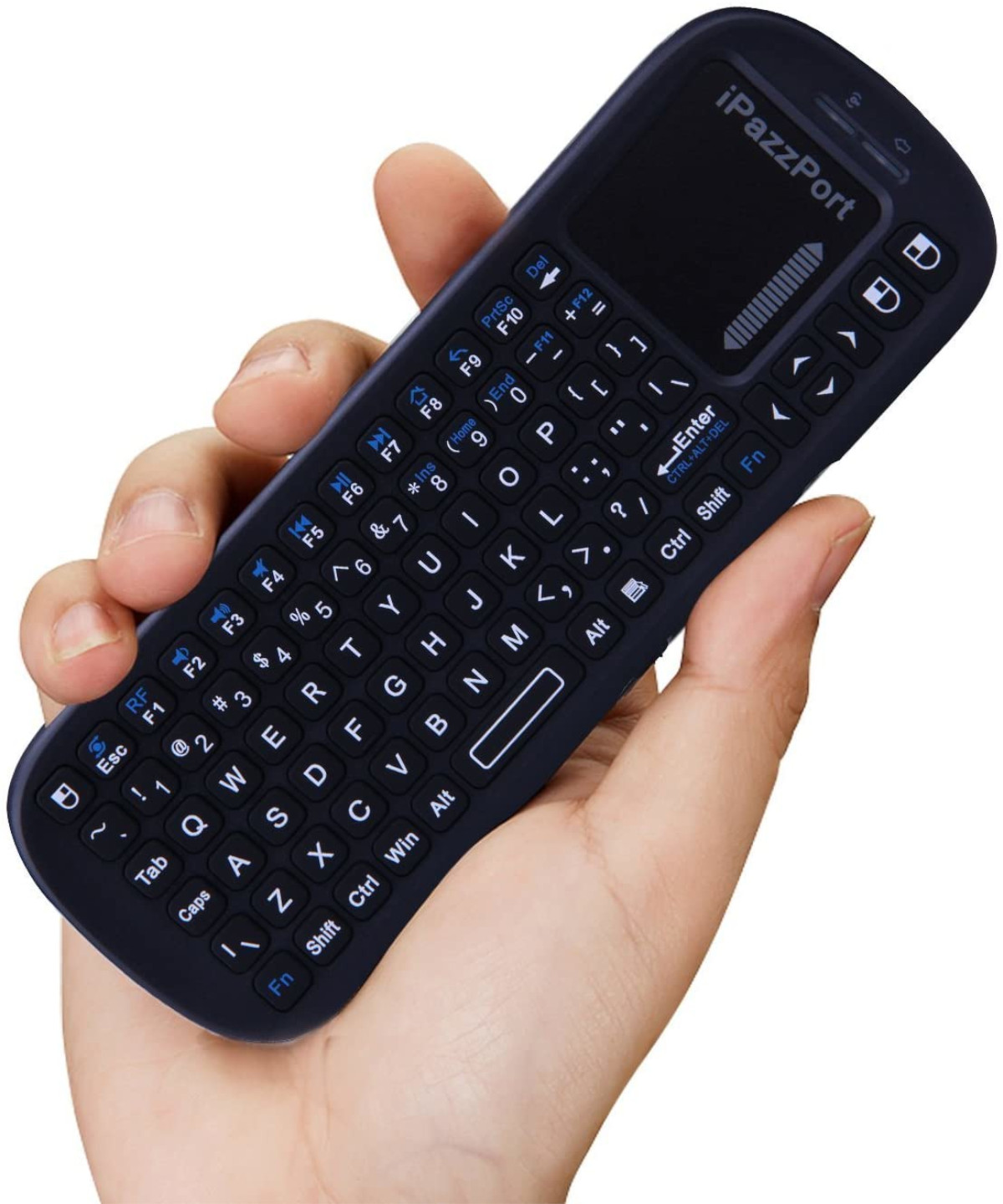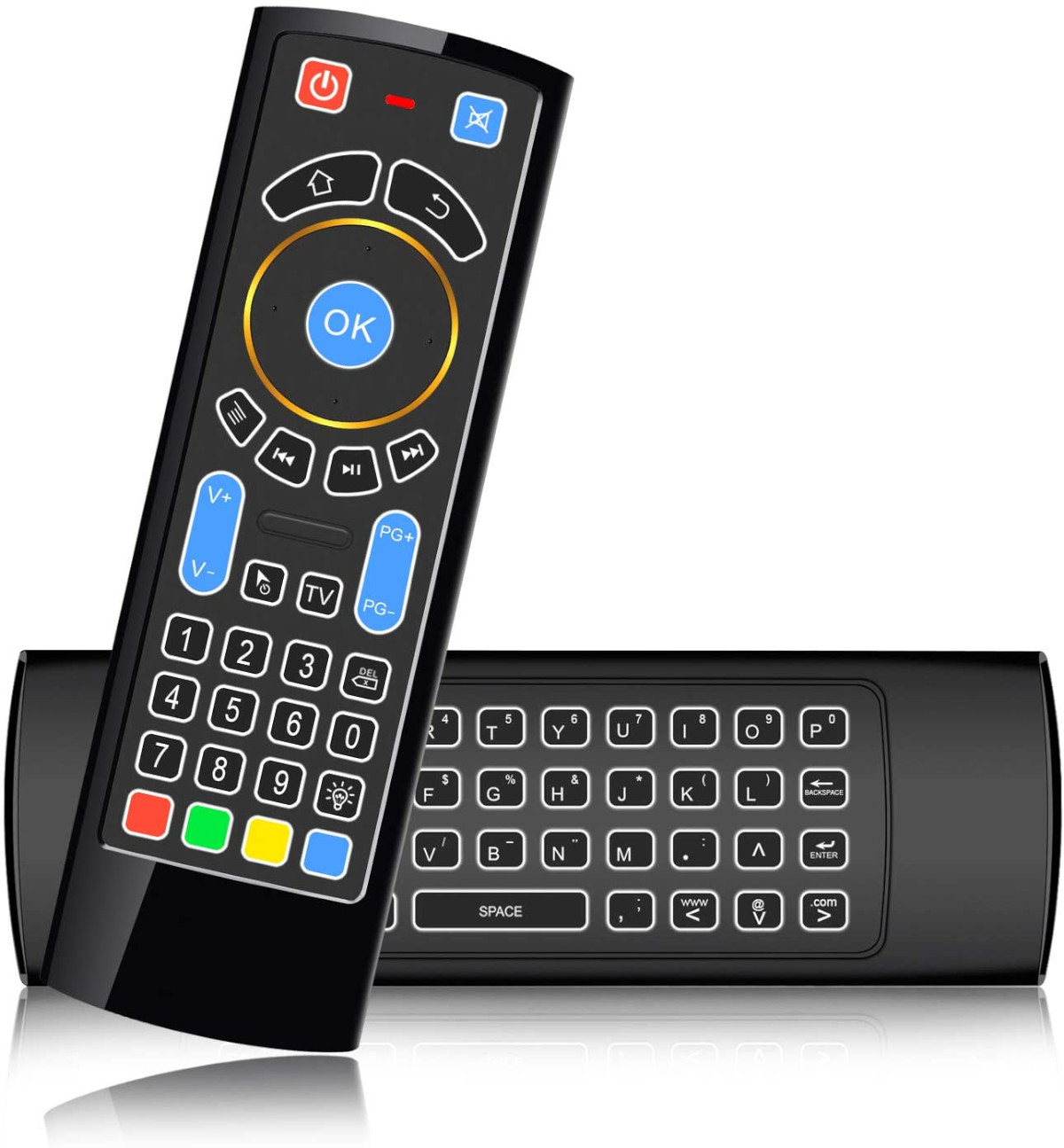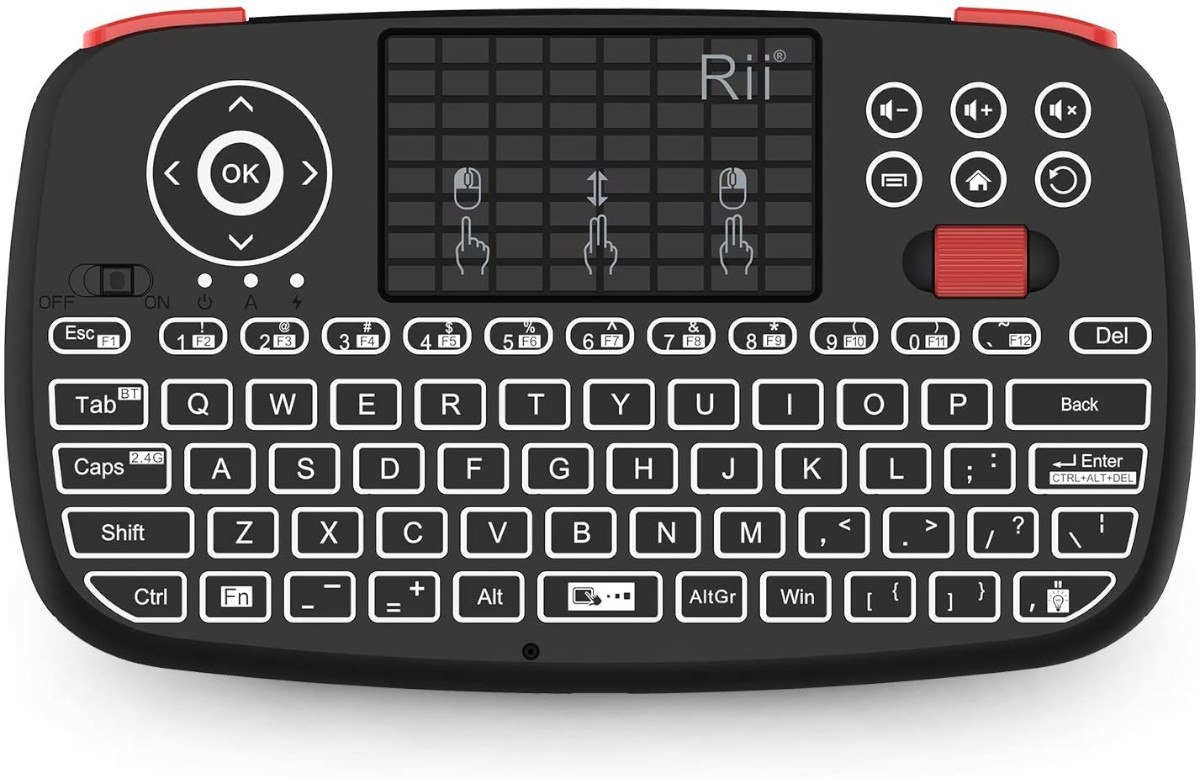Whether you’re using a Raspberry Pi 4 running LibreELEC, a Pi 3 running OSMC, or an Ubuntu desktop computer running a Kodi session, you’ll no doubt want to get a wireless remote control to make things easier. However, not every wireless remote will work with Linux, and picking just any wireless remote on your favorite e-commerce store isn’t a great idea.
If you’re in the market for a wireless remote to use on your Linux-powered media center, follow along with this list instead. We’ve carefully researched and come up with an excellent list of wireless remotes that are sure to work excellent on a wide variety of Linux-based operating systems, including those that run on the Raspberry Pi.
What media center should I use?
There are a lot of Linux-based media centers out there. If you’re trying to build a Linux-based media center, and have a Raspberry Pi 3 or 4, try LibreELEC. It’s a lightweight, dependable Linux-based operating system that comes with the latest Kodi.
Not using a Pi device? Just use any take Linux distribution on your desktop or laptop computer and install the latest Kodi on it, plug in your remote and enjoy!
What’s the best wireless remote for Linux?
In our testing, we’ve found that these 4 remotes are the best remotes to use on Linux media centers.
1. REIIE H9+ Backlit Wireless Mini Handheld Remote
The REIIE H9+ is a wireless handheld remote. It comes with a full backlit qwerty keyboard, dedicated volume buttons, a home button, play/pause/skip/previous buttons, and even a menu button. Also, the REIIE H9+ has a touchpad that allows users to use to navigate Linux media center software with the mouse.
Many USB remotes for PC have keyboards, but the REIIE H9+ stands out by offering a keyboard with dedicated function keys (like F1-F12, and others), which will allow users to access advanced computer operations from the comfort of the remote.
In terms of connectivity, the REIIE H9+ interacts with Linux by way of a 2.4 GHz wireless adapter. This wireless adapter allows the user to plug in and start using the remote. No tedious Bluetooth pairing or fiddling required!
In our testing, we found that the REIIE H9+ remote control worked on Linux quite well, and also functioned on the Raspberry Pi in Linux-powered operating systems like LibreELEC and OSMC.
Pros
- It is powered by a rechargeable lithium-ion battery.
- Full qwerty keyboard with dedicated function keys, as well as specialized media keys and a roomy touchpad.
- 2.4 GHz connectivity means quick and easy setup on a wide variety of Linux devices.
- Very affordable given the features it offers.
Cons
- The strange shape of the device might prove to be uncomfortable to those used to a traditional, rectangular remote.
2. iPazzPort Wireless Mini
The iPazzPort Mini is a wireless remote control for Linux and other computer operating systems. It features a full qwerty keyboard with built-in function keys (F1-F12/media action keys) and a mouse touchpad for input. In addition, the iPazzPort Wireless Mini has an integrated volume up/volume down rocker and a power button. Suffice it to say; this remote has a lot to offer for Linux media center users.
While the iPazzPort Wireless Mini sports a full keyboard, complete with function keys and a mouse touchpad, that’s not the most exciting feature. The thing that makes it an incredible remote for Linux is the fact that although it’s a fairly inexpensive device, it comes with a 2.4 GHz connectivity dongle, which users can use to interact with Linux, rather than Bluetooth. As the iPazzPort Wireless Mini has it’s own dedicated 2.4 GHz connectivity dongle users do not need to fiddle to get the device to work.
While testing the iPazzPort Wireless Mini, we found that it worked very well on most mainstream Linux operating systems with no issues. It also worked in the Raspberry Pi on Linux-based operating systems such as LibreELEC and OSMC.
Pros
- Full qwerty keyboard with dedicated function keys.
- Dedicated 2.4 GHz dongle means fast connectivity on a wide variety of Linux devices.
Cons
- Requires AAA batteries to power the device and batteries are not included.
- The touchpad is small and cramped.
3. Bluetooth CR3
The Bluetooth CR3 is a wireless remote control for the PC platform. The remote has two sides. On one side, it has a fully functional, traditional TV-remote style interface with volume up/down buttons, a mouse button that when pressed allows the user to use the remote as a mouse, media controls, a home button, a power button, 1-9 number buttons, etc. On the other side, the Bluetooth CR3 has a full qwerty keyboard, complete with function keys and up/down/left/right arrow keys. Both faces to the remote are backlit.
The Bluetooth CR3 uses Bluetooth 3.0 and has a maximum connectivity range of 100 Ft at 24Mbps. Users do not need a USB dongle to connect to their Linux PC or Linux-powered media box. Instead, the remote can connect over Bluetooth chips already included in their Linux machine.
In our testing, we found that the Bluetooth CR3 worked quite well on Linux, especially with the built-in Bluetooth chip on Raspberry Pi devices running LibreElec or OSMC. That said, the device isn’t primarily focused on usage with Linux, as In the marketing material, the Bluetooth CR3 wireless remote is “best with Amazon Fire TV,” so issues may occur.
Pros
- Affordable and inexpensive given what is included.
- The mouse button lets the user aim the remote and use it as a mouse.
- Full qwerty keyboard with various function buttons.
- The dedicated power button, volume rocker, and media buttons.
Cons
- Requires AAA batteries to use the remote, and they are not included.
- Remote sometimes ignores it’s in keyboard mode.
- Bluetooth connectivity with some Linux devices may prove to be tedious and unreliable.
4. Rii i4 Mini Bluetooth/2.4 GHz wireless Keyboard remote
The Rii i4 Mini is an impressive media center keyboard. It comes with a full qwerty keyboard, arrow key navigation buttons, media controls, dedicated home button, and function keys. It also has a volume rocker, programmable shoulder buttons, and a wide touchpad that users can use to browse the media center with a mouse.
The Rii i4 is lithium-ion powered, so users do not need to add batteries to use it. In terms of connectivity, it uses both Bluetooth as well as 2.4 GHz wireless (via an included) dongle. Diverse connectivity means that even if the Linux operating system you plan to use it on doesn’t support the USB 2.4 GHz dongle, you’ll still be able to use the remote with Bluetooth.
While testing the Rii i4 Mini remote, we found that it worked out of the box with the 2.4 GHz connectivity dongle on both PC Linux operating systems and Raspberry Pi Linux media OSes (LibreELEC and OSMC). The device also paired and worked very well over Bluetooth on those same OSes.
Pros
- Can connect to Linux via Bluetooth or an included 2.4 GHz dongle.
- The remote may be uncomfortable to hold for some users.
- Supports both Raspberry Pi-based Linux OSes and traditional desktop Linux.
- Has a dedicated row of function keys, and a built-in mouse touchpad.
- Rechargeable lithium-ion battery.
Cons
- Connecting via Bluetooth on some Linux devices may prove tedious and unreliable.
Conclusion
In this list, we covered some of the very best wireless remote controls to use on a Linux media center. However, there are many other great wireless remotes out there with Linux support. What is your favorite wireless remote to use with Linux? Sound off in the comments below!




